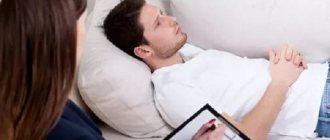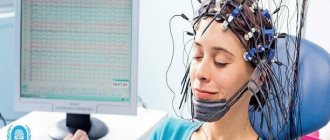04/23/2019 · Blog · No comments yet
Every person has experienced a panic attack (PA) at least once in their life - a sudden severe anxiety, which is accompanied by a racing heartbeat, increased blood pressure, and a feeling of heaviness in the chest. But not everyone who has experienced panic needs treatment. There is no treatment for panic attacks as such. Help is needed if PAs have become systematized, frequent, and the person cannot cope with the problem on his own. The article will focus on the so-called panic disorder.
Briefly about the problem
Panic disorder is spontaneous, unexpected panic attacks that occur at intervals from several times a year to several times a day and are characterized by the presence of anxious anticipation of the next panic attack.
Patients often have to consult various specialists to get the correct diagnosis. A person with panic disorder can be observed for a long time by a neurologist with a diagnosis of vegetative-vascular dystonia (VSD). Panic attacks and VSD are very similar. This is due to the fact that during panic the autonomic nervous system is actively working.
Symptoms during PA are associated with the activity of the autonomic nervous system: during severe anxiety, the hormone adrenaline enters the blood. This is necessary to trigger the biological survival program - the fight and flight reaction, which is genetically programmed. Adrenaline increases the heart rate, increases blood pressure, quickens breathing, blood rushes to the muscles of the arms and legs, flows out of the hands and feet, and the person breaks out in sweat. All this is needed to successfully implement the fight or flight response , nature’s stress response program.
The problem is that nowhere except Russia there is such a diagnosis - VSD. With VSD, the symptoms are vague, and there is no specific cause of the disorder. Therefore, the symptoms of panic disorder easily fit into the criteria for VSD; the person is given an incorrect diagnosis , and accordingly he does not receive proper adequate treatment.
If a person has been correctly diagnosed and has been referred to a psychotherapist or psychologist, then PA therapy for panic disorder can be effective and short-term, even without the use of medication.
How do panic attacks become panic disorder? Initially, there are two reasons for panic attacks: a strong negative or positive experience.
A person experienced stress or had a joyful event, and the body responded to this with physical symptoms. If a person does not attach importance to these symptoms and does not fixate on them, then everything is fine.
If a person fixates on the symptoms and begins to see in the changes occurring in the body an impending disaster - a heart attack, stroke, signs of loss of control and insanity, then this is the first step towards panic disorder .
The second step is to wait for a similar condition to recur, which already leads to the fact that a small amount of adrenaline enters the blood, a vegetative reaction is triggered, and so on in an increasing manner.
Another important criterion for panic disorder is protective behavior. This behavior manifests itself in a person’s actions in order to “save” himself from the consequences of panic symptoms - madness, heart attack, stroke. Protective behavior includes taking medications, calling a doctor, the need to lie down, sit down, and not be left alone.
Protective behavior is a disservice to yourself when dealing with panic disorder. A person has no way to make sure that nothing terrible will happen, that he will calm down over time, without resorting to any means.
This behavior is difficult to refuse. In the short term, it reduces anxiety, but in the long term, it increases it, since each time a person loses faith in his own strength in the fight against the disease.
In the absence of treatment, the repertoire of protective behavior expands, a person becomes more and more limited in life - withdrawal from social contacts, agoraphobia, a constantly high level of anxiety for health, visiting doctors in the somatic network, financial losses, and often the inability to work.
Change habits
As we have already said, the main cause of panic attacks is severe stress and overexertion. Therefore, first you need to radically reconsider your regime: perhaps you live at such a frantic pace that you simply don’t notice it anymore. Meanwhile, the body sends you signals that you should not ignore.
- If possible, avoid smoking and alcohol, limit the consumption of coffee and other caffeine-containing drinks (strong tea, cola, etc.). It is better to replace them with natural leaf tea with chamomile, mint, and St. John's wort.
- Healthy eating. Abuse of fatty, sweet and salty foods, carcinogens and fast food is your worst enemy, as it puts increased stress on all systems and takes away precious strength from the body. At the same time, vital nutrients are in short supply. The body does not have enough energy to cope with the load. Eat a balanced diet, try to eat more fresh vegetables (especially seasonal ones), nuts, fish and chicken fillets. This will help compensate for the lack of calcium, vitamins, and omega-3 acids.
- Correct schedule. Adjust your daily routine, especially your sleep pattern. You need to fall asleep and wake up at the same time, and sleep for at least 7–8 hours. If at first you have difficulty falling asleep earlier, you can take a course of mild sedatives.
- Cold and hot shower. An excellent tonic that not only invigorates, but also strengthens the immune system. Of course, this is not a panacea for panic attacks, but in combination it will help you stabilize your nervous system.
General advice does not contain any discoveries: rest more often (including during the day), spend time in the fresh air, play sports or yoga. But this is precisely what has the most noticeable effect.
Treatment of panic attacks
The standard treatment for panic disorder worldwide is cognitive behavioral therapy. It has proven its effectiveness in many domestic and foreign experimental studies.
Cognitive behavioral psychotherapy for panic attacks has a number of advantages:
- short-term (6-12 sessions);
- proven effectiveness;
- the ability to do without drug treatment.
Prescribing tranquilizers or antidepressants is advisable:
- the problem with panic has existed for a long time and the anxiety is so strong that starting psychotherapy is difficult;
- Panic disorder is accompanied by depressive feelings.
It should be emphasized that psychopharmacotherapy is only an auxiliary method of treating panic disorder. It does not solve the original problem, which will return after stopping the drugs.
Can a person cope with panic disorder on their own? Yes, with good motivation and good self-help manuals (there are very few of them in Russian).
The main difficulty in self-help remains the lack of a correct diagnosis.
The British NICE system of care for panic disorder places self-help in third place, after cognitive behavioral therapy and psychopharmacotherapy, which is prescribed only if the person has refused psychotherapy.
Where to begin?
Firstly, there is no need to “wind up” yourself, believing that you are suffering from some dangerous and complex disease. A panic attack itself does not pose any serious danger and does not impose any special restrictions on you. The feeling of panic during attacks is just an illusion, and there is no real threat to you at this moment.
Often, during panic attacks, a course of sedatives is prescribed. You shouldn't rely only on them. As a rule, sedatives only reduce the level of tension, help reduce the load on the heart and blood vessels, and normalize sleep. But this is not enough to eliminate the very cause of panic attacks. It all depends entirely on you, so listen to our recommendations.
Benefits of PA psychotherapy
When turning to a psychotherapist in specialized clinics for the treatment of panic attacks, a person has the opportunity to significantly reduce the time of treatment for the disorder. The work follows specialized protocols that take into account all factors in the occurrence and maintenance of the disorder.
Who is psychotherapy suitable for?
Psychotherapy for panic disorder has no special contraindications . The restrictions relate to general contraindications in psychotherapy, for example, cognitive deficits in humans.
Therapy for panic disorder can be carried out without loss of effectiveness online via Skype. This is convenient for remote areas of Russia, where there are no specialists who successfully use methods of treating panic attacks and panic disorder.
How panic attacks are treated by a psychotherapist
The treatment protocol for panic disorder consists of:
- identifying panic triggers;
- psychoeducation of the patient - an explanation of the ongoing processes from a scientific point of view;
- identifying misconceptions about panic;
- withdrawal of protective behavior;
- exposition.
Exposure is the presentation of frightening situations, the experience of which gives the person a new experience that a panic attack is experienced. It helps reduce panic attacks during neurosis. This is a necessary element of therapy, which, through the experience of fear, under the supervision of a specialist, leads to a good result and recovery.
Our approach to treatment (exercises on the stabiloplatform)
Stabilometry is a modern method that allows you to assess the state of a person’s balance in various diseases.
The patient is examined on a special platform that records minimal vibrations of the human body with subsequent computer processing. At the end of the study, a conclusion and recommendations for rehabilitation in the form of training are issued.
With the help of video games, a person, by moving fulcrum points, “guides” the actions of the character on the screen, thereby training his vestibular apparatus. Repeated repetition of such training increases the effectiveness of the therapy.
Treatment on a stabiloplatform with biofeedback is prescribed as part of complex therapy for diseases and pathological conditions such as:
- imbalance, loss of coordination;
- frequent dizziness and headaches;
- diseases of the vestibular apparatus;
- panic attacks accompanied by dizziness
- polyneuropathy;
- vascular diseases, conditions of impaired blood supply to the brain, incl. post-stroke
- various spinal injuries (vertebral displacement, curvature)
- flat feet
Treatment of neck diseases
Some patients who experience dizziness or balance problems also have orthopedic neck problems that cause or worsen their symptoms. In these cases, your physiotherapist at Healthy Sports can also provide hands-on treatment in combination with the other ART exercises described above.
Strategies for self-administration
Secondary damage due to vestibular problems can occur due to frequent falls. As part of your ART, your doctor will talk about simple strategies that can minimize the risk of secondary injuries. For example, you may be advised to use walking aids if you are tired or in a particularly busy environment, such as a grocery store.
Conclusion
ART can be extremely helpful in reducing or eliminating any vestibular symptoms and imbalances you may experience due to diseases or abnormalities of the inner ear or central nervous system. These exercises will lead to the best results if they are prescribed by one of our doctors at the Healthy Sports Medical and Health Complex.
You can undergo an examination at the Healthy Sports Medical and Health Complex, make an appointment by phone: 58-88-28









